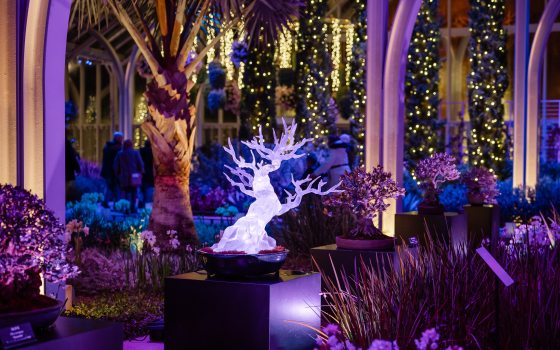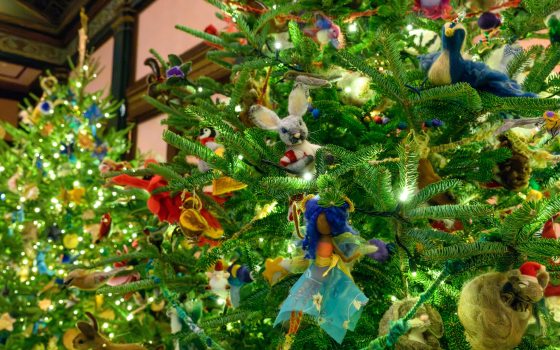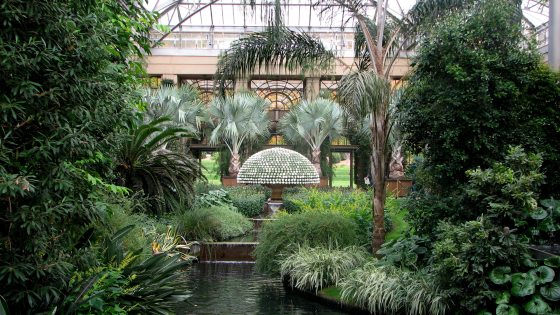
Do you hear the word chrysanthemum and picture those simple household flowers from the local garden shop? At Longwood Gardens, we take the ordinary mum and make it extraordinary, turning it into a work of art—the Thousand Bloom Chrysanthemum! We started our Thousand Bloom Chrysanthemum from vegetative cuttings of Chrysanthemum x morifolium ‘Sosono no Tsuki’ in May 2010. In order to grow this year's mum, we had to overcome the challenges of heat, rain (Hurricane Irene!), stink bugs, and the 12’ 7” wide door of the East Conservatory (which was just barely wide enough to bring the mum through). Each year, we grow two plants to help ensure we can reach our goal of more than 1,000 blooms on a single plant. Each month, both plants are repotted, pinched, tied, and framed as needed. In the end, we will use only one of them for display in the Conservatory. Here is a slideshow that documents the mum's growth over the past year. Please enjoy!
MONTHLY PROGRESS: May 2010: Several cuttings are taken from stock plants grown at Longwood. After two weeks they are brought into the greenhouse to harden off and are then transplanted into 4” pots.
June 2010: The plants are transplanted into larger pots and have their stems scratched (scarification) with a knife to apply rooting hormone. This creates a larger root system to support the enormous top growth.
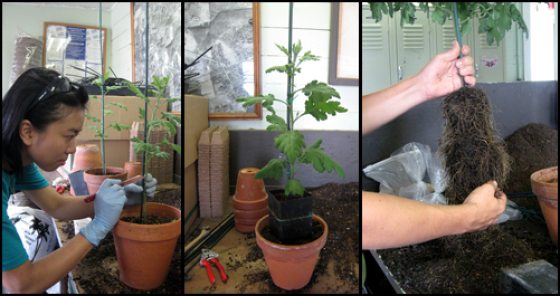
To prevent flowering, the plants are placed in a greenhouse lit at night. During summer, the plants continue to grow and are pinched at around 2” tall to encourage 14-18 shoots by first pinching. We continue to pinch every 6-8 leaves depending on stem length.
December 2010: Two plants are selected and placed into final growing containers that are custom made by Longwood’s carpenters. The containers are made with dividers so that the volume of soil can increase as the plant grows. The main metal support structure is also put into place and will extend as the plant grows. Stems are bent down to begin forming the structure of the final plant.
February 2011: The first set of framing is applied to the main support structure. Each frame layer is constructed on site and is made of fiberglass rods wrapped in black tape. The tape makes the rods easy to handle and also adds a bit of friction to help us twist the ties used to hold the stems to the rods. The fiberglass rods are joined by custom-made connectors and tied together with zip ties.
March 2011: Another set of framing is added, increasing the overall width by about 5-8". To increase the number of branches, we pinch and then tie each stem to the fiberglass frame with a twist tie. After we place the mums into their final growing container, we continually coax them to grow bigger—with pinching (to encourage branching) as well as proper watering and fertilization techniques (to encourage healthy growth). The plants are monitored for any signs of disease or insects that are treated as needed. Each month, depending on growth, the fiberglass framework is extended to help encourage growth and to continue to support the stems as we reach our final size.
September 2011:As the buds begin to form, we begin to disbud the mums. This process involves taking all of the smaller side buds off and only allowing the main center bud to continue to grow, resulting in one beautiful 4-5” flower on each stem.
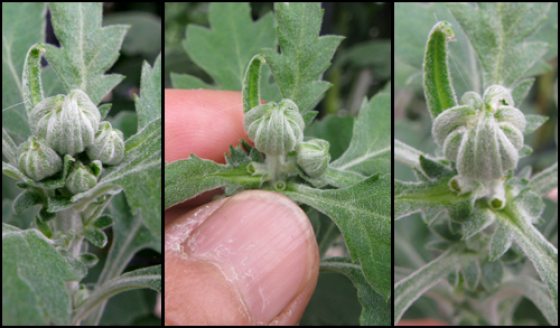
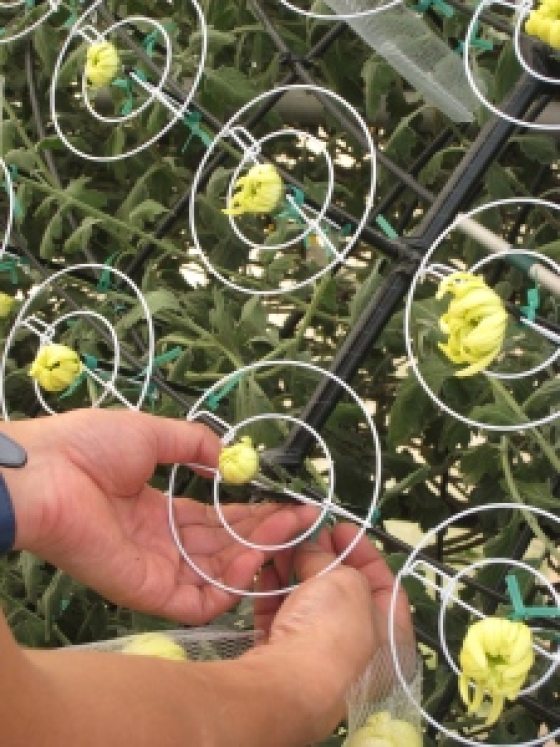
October 2011: Less than one month before the beginning of Chrysanthemum Festival, we select our display plant and begin final flower placement. The frame is custom made each year based on the plant’s size. Longwood’s Chrysanthemum specialist and her crew of interns, international students, seasonal, and part-time staff members begin by arranging the flowers on the top first and working their way down, making sure each row is placed perfectly in concentric rings and that each flower is lovingly placed into a Rindai support to properly position it.
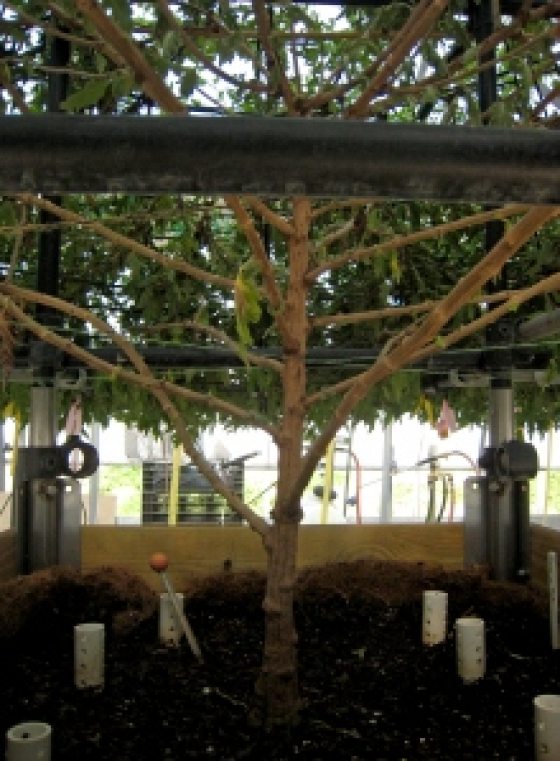
The process of placing the flowers takes about 10 days, at the end of which we finally know the answer to everyone’s question, “HOW MANY BLOOMS THIS YEAR??” After achieving 991 blooms on the 2010 Thousand Bloom Chrysanthemum, our goal was to beat that number. And we did!!! This year’s total is 1,167 flowers!!! As you can see, a lot of time and effort goes into producing the Thousand Bloom Chrysanthemum. It's on display now in the East Conservatory. Make sure to kneel down to see the one stem coming from the soil! The Chrysanthemum Festival, October 29–November 20, showcases thousands of amazing chrysanthemums throughout the Conservatory, including Cascade style, topiaries, single stem mums and the Thousand Bloom Chrysanthemum.

